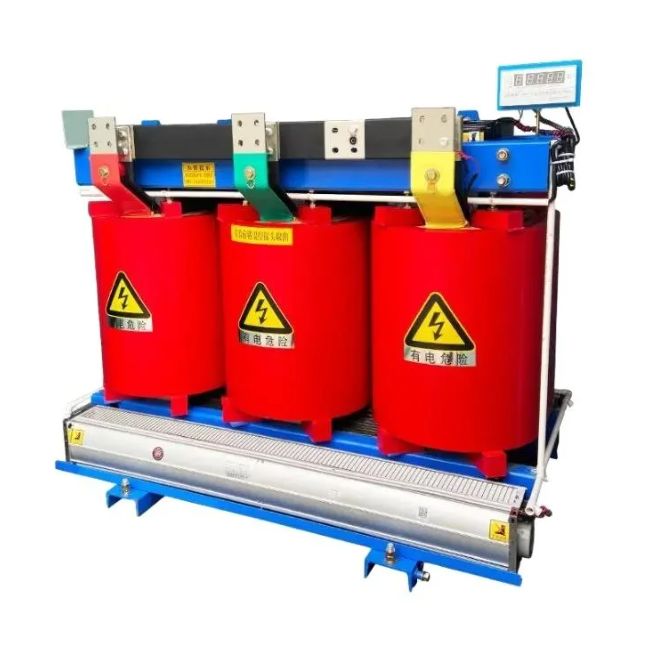What Are Dry Type Transformers and Why Are They Essential for Modern Power Systems?
2024-12-17
In the world of electrical power distribution, transformers play a crucial role in ensuring the safe and efficient transfer of electricity. Among the various types of transformers used in different industries, dry-type transformers have gained significant attention for their unique benefits. But what exactly are dry-type transformers, and why are they becoming increasingly essential in modern power systems?
In this blog, we will explore the workings of dry-type transformers, their advantages, and the reasons why they are preferred in certain applications. From their safety features to their environmental benefits, dry-type transformers are reshaping how electricity is distributed and consumed in a variety of industries.
What is a Dry Type Transformer?
A dry-type transformer is an electrical transformer that uses air (rather than oil or other liquids) as its cooling medium. Unlike traditional oil-filled transformers, which use oil to cool and insulate the windings, dry-type transformers rely on the natural cooling effect of air and the insulating properties of solid materials such as epoxy, resin, or varnish to protect the transformer from overheating.
Dry-type transformers are typically used in locations where safety and environmental concerns are paramount. They are commonly found in commercial buildings, industrial facilities, and urban areas where the risks associated with oil leaks or fires need to be minimized.
How Do Dry Type Transformers Work?
The basic working principle of a dry-type transformer is similar to that of any other transformer. It uses two coils—primary and secondary windings—that are wrapped around a core. The core creates a magnetic field that transfers energy from the primary coil to the secondary coil, changing the voltage level of the electrical current.
What sets dry-type transformers apart is their insulation and cooling system. Instead of using liquid oil to insulate and cool the coils, dry-type transformers utilize materials like cast resin or vacuum pressure impregnation (VPI) to ensure that the coils are adequately insulated. This insulation is designed to withstand the heat generated by electrical current while also preventing electrical short circuits or arcing between the coils.
For cooling, dry-type transformers rely on the natural flow of air or forced air circulation. In some designs, fans or blowers are used to enhance heat dissipation, ensuring that the transformer operates within safe temperature limits. This air-cooled mechanism eliminates the need for the oil-filled tank typically used in liquid-cooled transformers.
Why Are Dry Type Transformers Important?
#1. Improved Safety
One of the primary advantages of dry-type transformers is their enhanced safety features. Since they do not contain oil, there is no risk of oil leaks, spills, or fires, which makes them ideal for locations with high safety standards, such as hospitals, shopping malls, schools, and manufacturing plants.
In the event of a fault or electrical failure, dry-type transformers are less likely to pose a fire hazard compared to their oil-filled counterparts. This makes them a safer choice for sensitive environments where fire risks must be minimized.
#2. Environmental Benefits
Dry-type transformers are often considered more environmentally friendly than oil-filled transformers. The absence of oil means there is no risk of environmental contamination in case of leakage, making them a more sustainable option. Furthermore, dry-type transformers have lower maintenance costs, as they do not require regular oil checks or changes.
With growing awareness of environmental issues and stricter regulations on hazardous materials, dry-type transformers are increasingly becoming the preferred option for businesses and industries looking to minimize their environmental footprint.
#3. Compact and Versatile
Dry-type transformers are generally more compact than their oil-filled counterparts, making them suitable for installations in locations with limited space. Their smaller size also makes them easier to install and maintain, offering greater flexibility for various applications.
This compact design is particularly advantageous in urban areas where space is limited, as well as in retrofitting projects where the available space for transformers is restricted.
#4. Low Maintenance and Long Lifespan
Unlike oil-filled transformers, which require periodic oil checks, replacements, and careful monitoring to prevent leaks, dry-type transformers require less maintenance. The solid insulation materials used in dry-type transformers have a long lifespan, and the air cooling system reduces the wear and tear that can occur with liquid-filled systems.
Moreover, dry-type transformers are designed to operate for decades with minimal intervention. This durability reduces the total cost of ownership and ensures reliable power distribution over a long period.
#5. Reduced Noise Pollution
Another benefit of dry-type transformers is their relatively quiet operation. While all transformers generate some level of noise due to the vibrations of electrical components, dry-type transformers are generally quieter than oil-filled models. This makes them ideal for use in noise-sensitive environments, such as office buildings, residential areas, and hospitals.
#6. Efficiency and Performance
Dry-type transformers offer high efficiency, ensuring that the electrical energy transfer from the primary to the secondary winding is done with minimal loss. This makes them highly efficient for power distribution and is especially important in industries where energy efficiency is a top priority.
Additionally, many modern dry-type transformers are designed to meet energy-saving standards and help reduce operational costs by minimizing energy wastage.
Applications of Dry Type Transformers
Dry-type transformers are used in a wide range of industries and applications. Some of the most common include:
1. Commercial Buildings: Dry-type transformers are commonly used in commercial and office buildings for power distribution, ensuring that electricity is safely and efficiently transferred to various sections of the building.
2. Industrial Applications: Industries such as manufacturing, chemical plants, and data centers often use dry-type transformers to manage their electrical needs. Their compact size and reliability make them ideal for industrial environments.
3. Renewable Energy Systems: In renewable energy systems, such as wind farms and solar power stations, dry-type transformers are increasingly used to convert electrical power from the renewable sources to the grid.
4. Transportation and Urban Infrastructure: Dry-type transformers are used in transportation hubs, underground utilities, and other urban infrastructure projects where safety and space-saving features are a priority.
5. Public Safety and Healthcare: Hospitals, fire stations, and other public safety institutions rely on dry-type transformers for their critical power needs due to their safety, reliability, and low maintenance.
Conclusion
Dry-type transformers are becoming a vital component of modern power systems, offering numerous benefits over traditional oil-filled transformers. With their superior safety, environmental sustainability, compact design, and long lifespan, dry-type transformers are well-suited for a wide range of applications across industries.
As power demands grow and the world becomes more focused on sustainability and safety, dry-type transformers offer a practical solution that meets both the technical and environmental needs of the modern world. Whether you're in the commercial, industrial, or public sector, dry-type transformers are an investment that ensures reliable, efficient, and safe power distribution for years to come.



